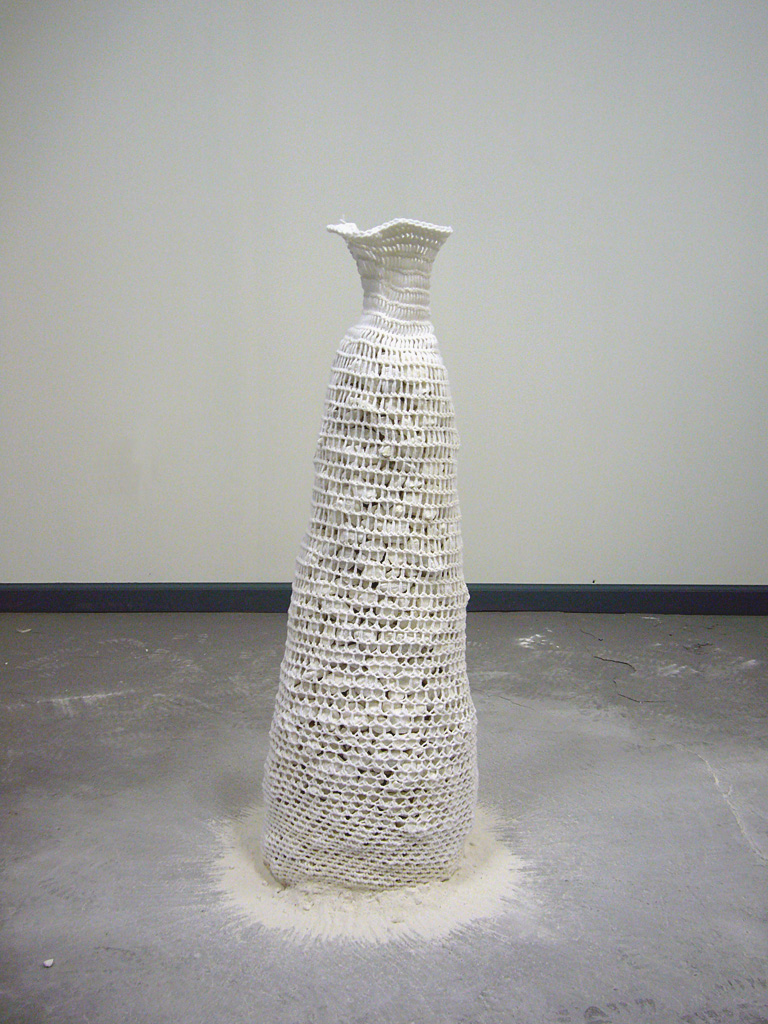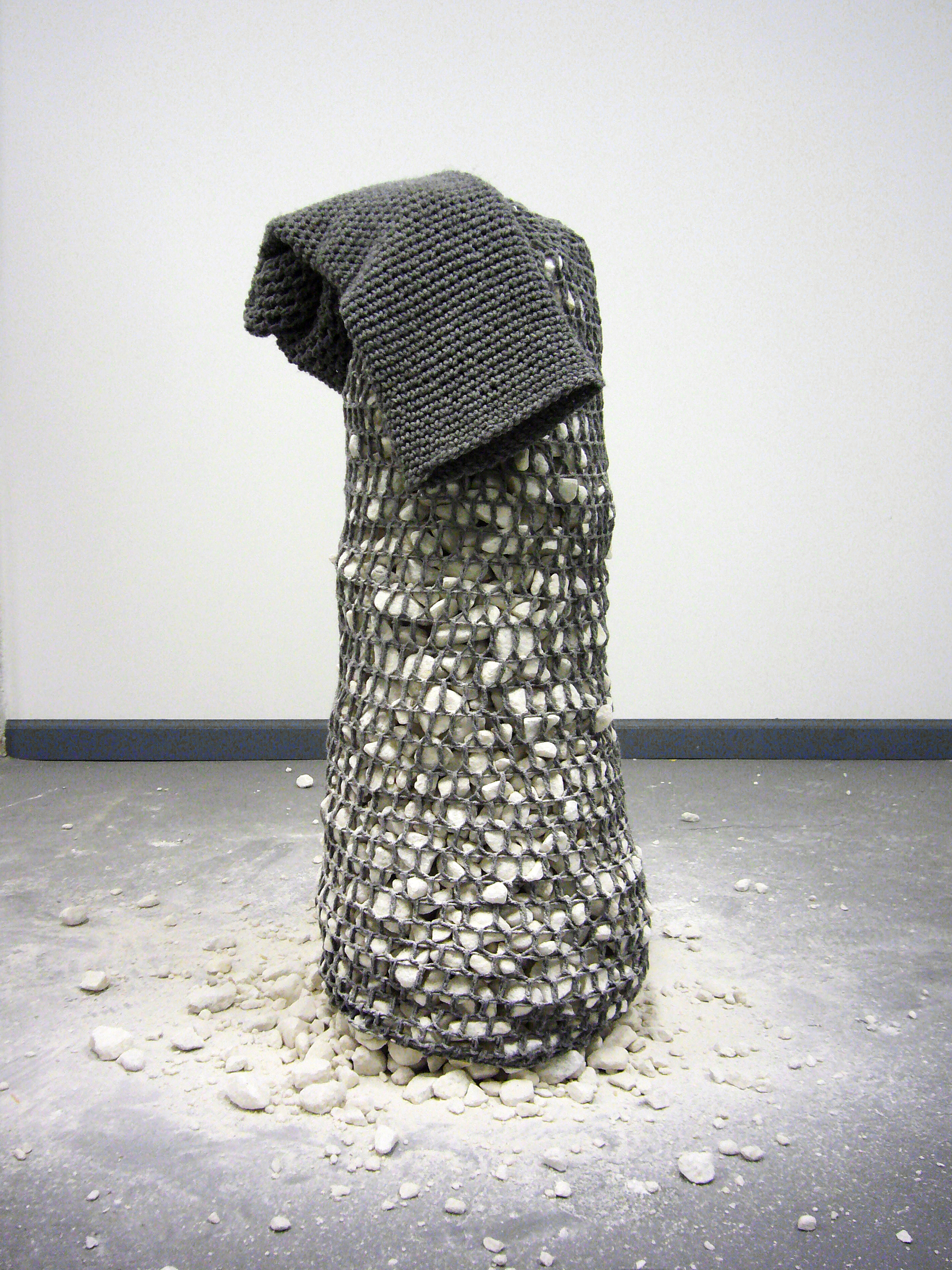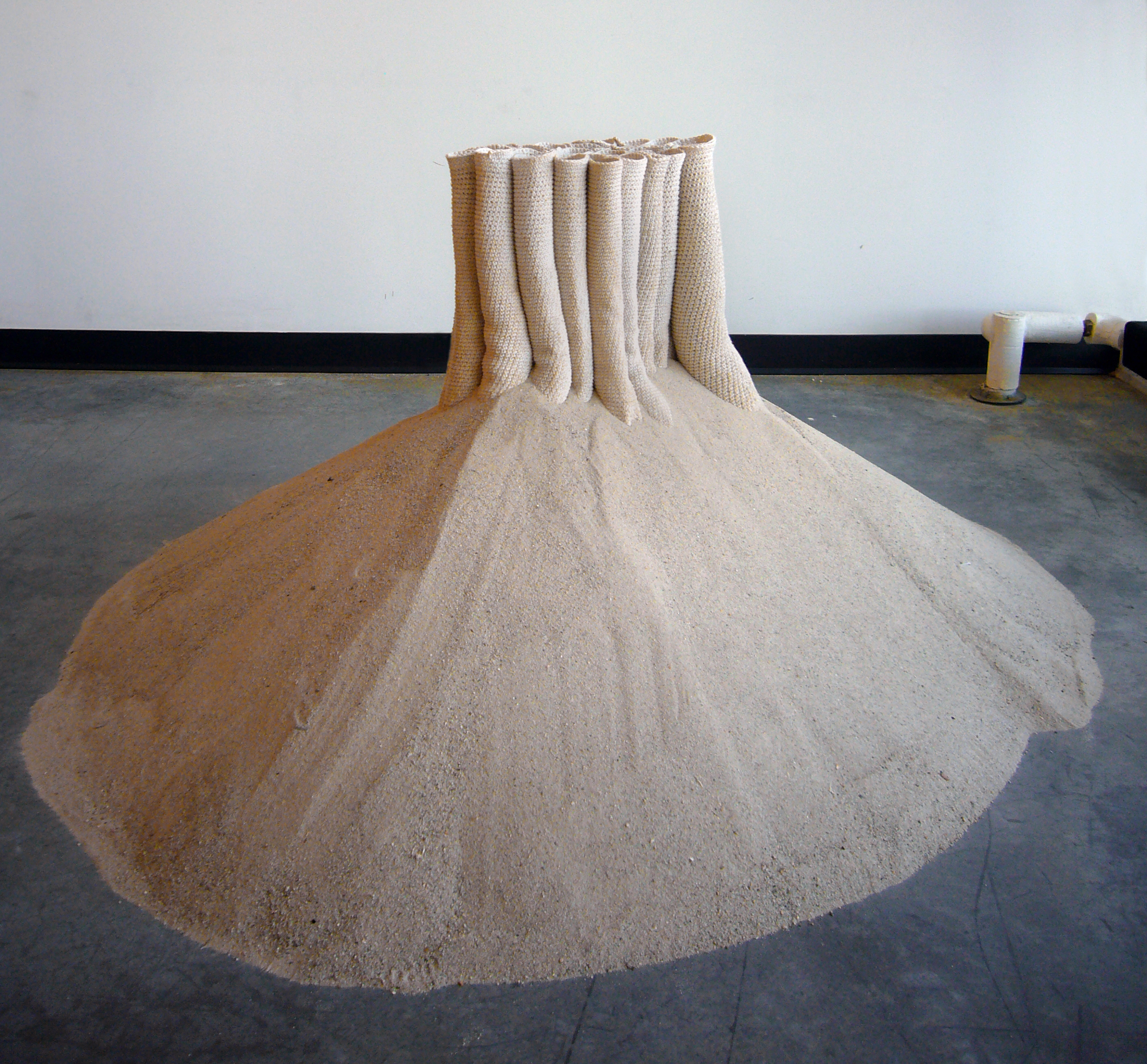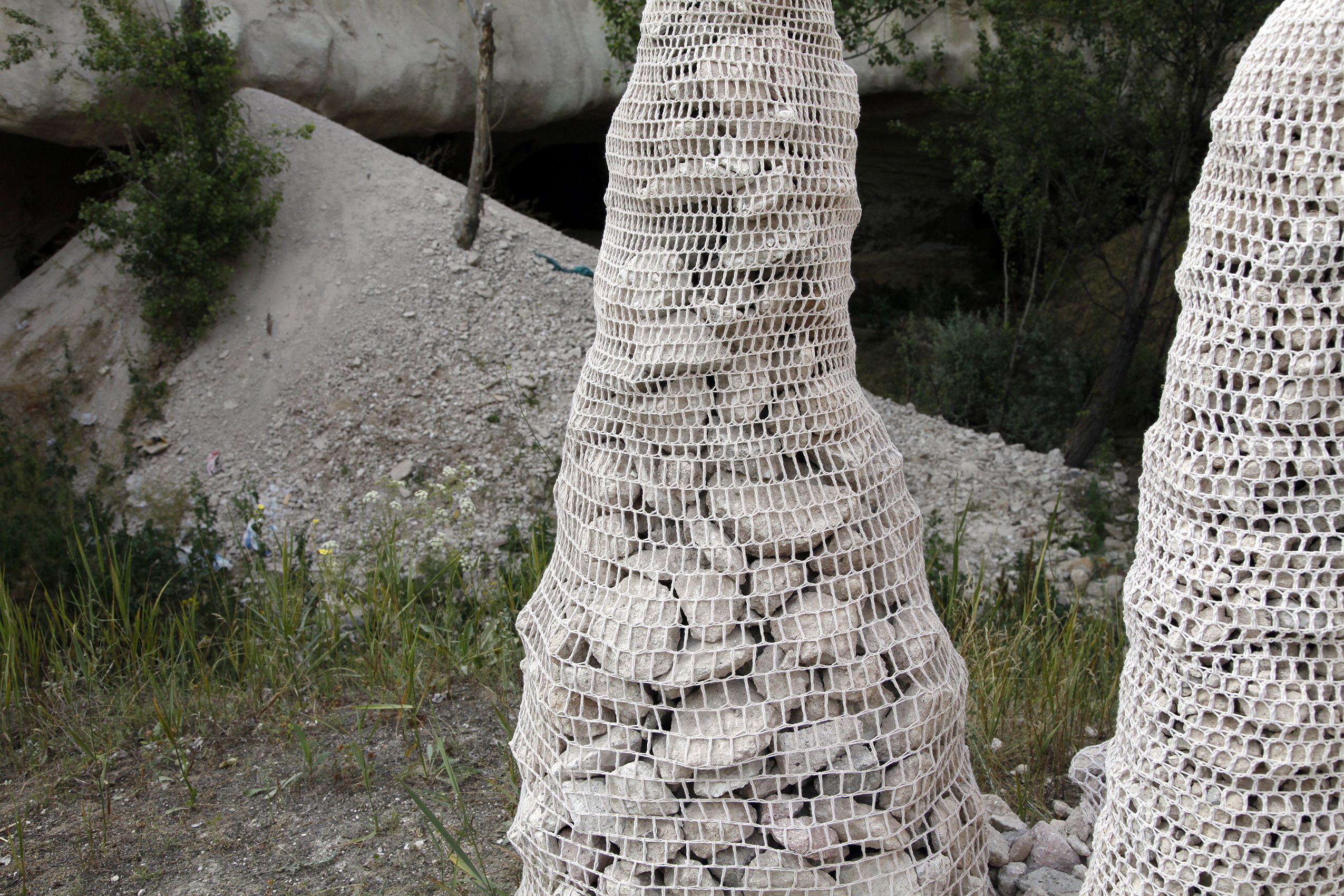Hisar Constructions
Hisar: (Turkish) Fortress or fortification wall. It is also used to refer to rocky landforms that resemble fortifications.
Hisar Constructions is a series of gabion constructions using textiles as a structural and representational skin for rubble and gravel piles. The compressive load of the fragmented ground is re-organized vertically by the running bond, ashlar masonry pattern of the crocheted skin in tension. The crocheted skin is only a tube. There is no bottom. Once built, they cannot be moved without disassembly.
Crocheted fabric, like a masonry wall, is built through a process of stacking one unit atop another. Gabion masonry systems were first used in Europe as portable fortifications by besieging armies, who filled the baskets they brought with them with gravel and rubble from the battle-ground.



Hisar Constructions (in-studio studies). 2009. Crocheted acrylic yarn or cotton twine, gravel.

Hisar Construction (Chicago Bulkhead). 2009. Cotton twine and rubble from collapsing bulkhead along Lake Michigan.


Hisar Construction. 2011. Cotton twine, Sand.
Some Hisar Constructions explored the possibility of constructing topography through repeated fills and lifts
.

Babayan Hisar Construction. 2010. İbrahimpaşa (Babayan), near Nevşehir, Turkey. Cotton twine, sediments from the erosion of houses, construction debris deposited in ravine.
